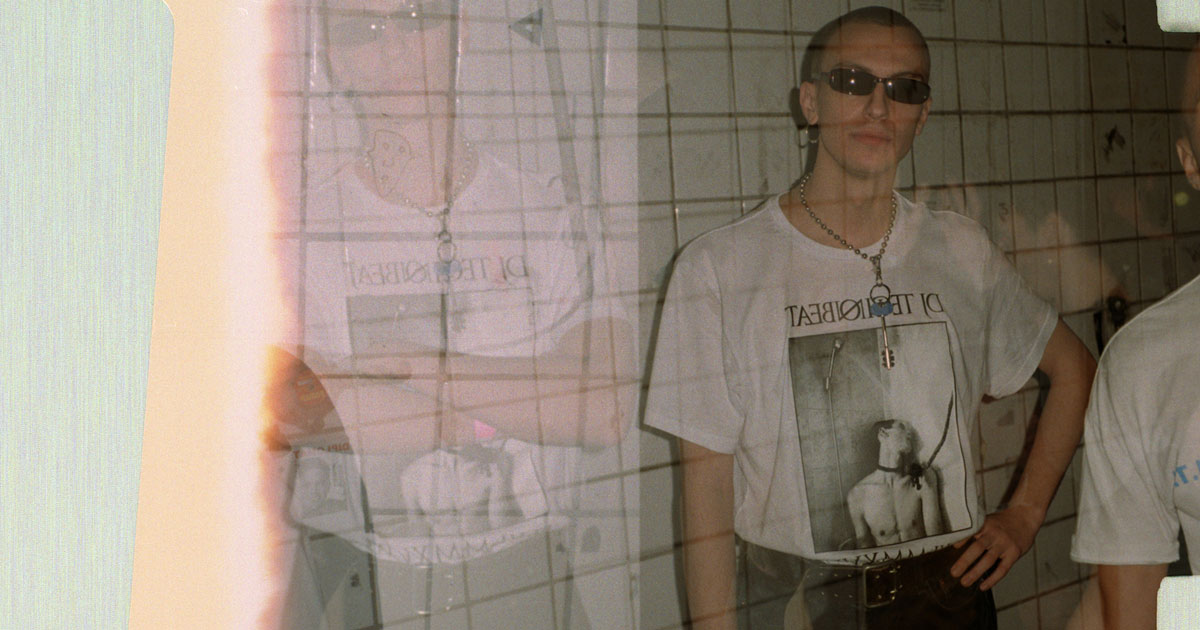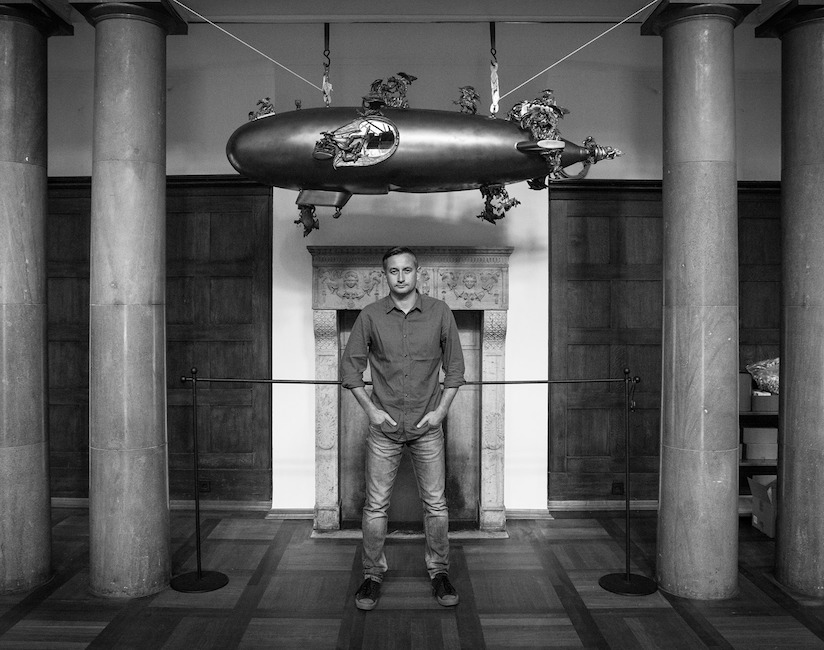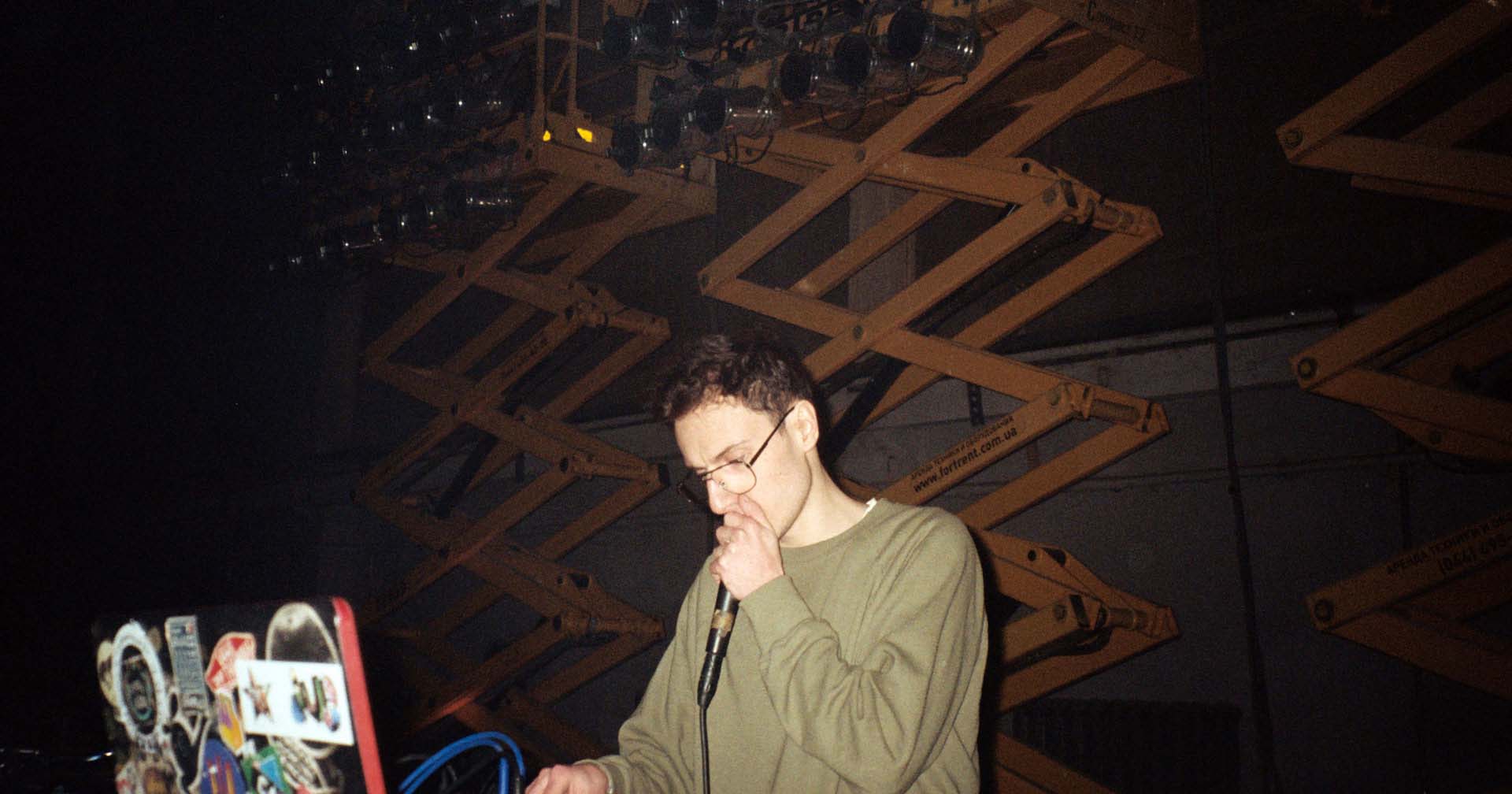Golden Coal: the zine capturing the lives of Donbas’ youth in the midst of war
Over the past six years, the people of Donbas have seen their homes transformed first into battlegrounds, then self-declared breakaway republics. But against all the odds, the region’s youth are still building full, creative lives in the area's underground scene: documented by zine Golden Coal.
Skaters dodge the police on the way home after curfew. DJs decipher the anatomy of post-war dance floors. Discerning students sift through thrift shops for salvageable arrivals. Everywhere, young people reach for turntables, film cameras, game consoles, or pencils to manage the loneliness and isolation — to say nothing of the boredom — that comes with living in Donbas, a war-torn region on Europe’s geopolitical edge.
It’s these stories that fill the pages of Golden Coal. Released back in 2017, the zine documents the youth-run art movements that still linger on in the separatist-controlled territories of east Ukraine.
Skaters in Luhansk. Image: courtesy of Golden Coal
The DIY-publication is the brain-child of the Lugansk Contemporary Diaspora, a collective of artists who hail from the parts of the region now administered by the self-proclaimed Donetsk and Luhansk People’s Republics, which broke away from Ukraine in a conflict between Kyiv and Russian-backed separatists in 2014.
Now, for the first time, Golden Coal has been published in English, reaching a broader audience than ever before with help from volunteers and supporters.
“The idea of a zine came up thanks to a desire on our part to resist the consequences of the war in Donbas,” says Evgeny Koroletov, one of the group’s founding members. He describes how the conflict has divided the region — not to mention the country as a whole — into opposing camps. The resulting isolation has not only been harmful to culture at large, but has had a debilitating impact on young artists, particularly those who either could not or would not leave the conflict zone.
“We were all forced to leave our hometown. I think this was a turning point for all of us”
The collective itself was not left untouched by the events of 2014. Nastya Malkina, another founding member, was just finishing art school in Luhansk when war broke out. “I hadn’t had the chance to be very involved [in the local art scene] before that, but I had many plans,” she says. “We were all forced to leave our hometown. I think this was a turning point for all of us that we’re still reflecting on through these Diaspora projects.”
Golden Coal makes its statement right from the cover, where a young man stares into the camera with an expression combining defiance, anger, and vulnerability. He wears a Gosha Rubchinskiy shirt, but with the logo covered by a Donbas-themed alternative with the words “WASTED YOUTH”. Other phrases, lifted from the stories inside, hint at the stakes involved:
“Most of the Kiev people can’t even imagine what many of those here have lived through.
Conflicts can’t last forever, ruining our youth.
I like to photograph things that are grim. Lugansk fits that perfectly.
I’m going home.”
The front cover of Golden Coal.
The features inside are just as varied. Anton Babin and Pavel Aleynichev, founders of the Prism collective, discuss the opportunities and obstacles facing the rave scene in post-war Donetsk. Tamara Gladysheva writes about the Porisuy Luhansk (“Let’s Draw Luhansk”) project, which helps young people create their own communities and find accessible (read: inexpensive) outlets for creativity. Nikita Lukomorskiy describes subcultures and squats in Ukraine while taking readers through the long process of shaping his own space.
There a deep sense of being misunderstood, of isolation from the life that happens out there, if only they can make it out of Donbas
Even in a context that demands that people take sides, the zine presents its heroes in a way that makes them infinitely more important than the political forces that, for now, define their lives.
But for all the projects’ diversity, a number of themes weave through the zine’s articles. There’s the inconvenience of the curfew, for starters, where people can be picked up by the police if they’re not home after 11pm. The effect this has on parties, and raves in particular, is obvious. Then there are the clothes, in particular the lack of regular shipments containing new styles. Trendsetters who want to express themselves hunt through the city for interesting materials, mostly in secondhand stores. From there, they repurpose their finds into something unique.
Then there’s the collective sense that people on the outside, even from neighbouring cities like Kharkiv, don’t really understand the lives of those who’ve remained. It doesn’t matter if that sense of alienation comes from Kyiv or Moscow: there a deep sense of being misunderstood, of isolation from the life happens out there, if only they can make it out of Donbas.
Partygoers at a rave by the Prism collective. Image: courtesy of Golden Coal
But what also strikes the reader is the immediacy and normalcy of these young people’s lives, the war itself notwithstanding. People still live and teens still get into trouble because, in the end, anything can become a new normal. It resists some of the region’s most persistent stereotypes, not just post-2014, but dating all the way back to the Soviet era.
The image of the Donbas is still fueled by Soviet legends, says Diaspora member Anton Lapov, These usually include the image of Aleksey Stakhanov, the iconic “shock worker” who gave his name to the infamous stakhanovites, the super-workers lauded as heroes across the Soviet Union. Propaganda posters of the day depicted the Donbas as a patriotic, industrial heartland. Even modern voices like Serhiy Zhadan, author of the popular Voroshilovgrad (titled after the Soviet name for Luhansk), depict the region as a Wild East marked by decay, resourcefulness and railroads that sometimes lead to nowhere. The land remains exotic and harsh.
The zine attempts to show the opposite. “We dreamed up Golden Coal,” Lapov says, “as a kind of utopian challenge that involves discovering new ways to think about the community.”
It is the issue of identity – the area’s status as a breakaway republic, the conflict between those who want to remain part of Ukraine and those who want to align with Russia – that also poses some of Golden Coal’s greatest challenges. While putting the zine together, Koroletov, Malkina, Lapov, and their colleagues had to make hard choices as to how to move forward.
A group from art project Porisuy Luhansk (“Let’s Draw Luhansk”) travel across the region. Image: courtesy of Golden Coal
The most obvious was that of language: how do you avoid taking sides when just referring to a major city requires you to use either Ukrainian or Russian? Traditionally, the English names of certain Ukrainian cities or regions have followed Russian spelling conventions, such as “Kiev” or “Lugansk”. Transliterating these place names using Ukrainian conventions produces subtle differences, transforming the cities into “Kyiv” and “Luhansk” respectively. As conflict has continued to bubble in the east of the country, such linguistic decisions have become increasingly fraught, akin to “picking a side” between pro-Kyiv and pro-Moscow forces. After much thought, Golden Coal decided to use the Russian transliterations, to reflect the predominantly Russian-speaking population in the Donbas area. That dilemma, however, did not come without a substantial explanation in the introduction to the English version.
Another problem was how to collaborate with groups from outside the region without compromising the local spirit. Lapov describes when a German television channel came to support Vostok, an ongoing series of parties inspired by the zine’s launch that features electronic musicians and producers from across the Donbas. With the presence of foreign media, his main goal was to keep the spotlight focused on the local DJs rather than making “a film where we would end up more of an exotic decoration for a German audience.”
But Koroletov says that both problems were worth the struggle. “[We want] to tell these stories to as many people as possible, because the conflict goes beyond the local. One way or another it has affected nearly the whole world,” he says.
The English translation also gave the team the opportunity to follow up with the original artists and writers, some of which no longer live in the region. “In the English version, we added a couple of words about where the guys are now,” Koroletov says. But he stresses that “most of what the magazine says is unchanged ... The isolation of residents on different sides of the front line has not gone away. But two years have passed and, for me, this magazine is an important project documenting underground youth culture in wartime Luhansk and Donetsk. And, most likely, it’s going to be the only one [of its kind.]”
A group from art project Porisuy Luhansk (“Let’s Draw Luhansk”) travel across the region. Image: courtesy of Golden Coal
For now, the Lugansk Contemporary Diaspora has no plans to release a second issue of Golden Coal — its members are equally invested in creating culture as in documenting it, exploring mediums as varied as music, movies, or magazines.
A new comic, Troubleside, was created with a sharp-tongued blend of humour and unreality to explore issues that anyone from the Donbas can relate to. “We’re constantly talking with the guys who live in Luhansk and Donetsk. They pass along cool ideas for stories,” says Malkina. The collective has also recently launched an internet music label also named “Lugansk Contemporary Diaspora,” which further consolidates the successes of the Vostok parties and features the talents of the Donbas underground music scene. An ongoing priority is bringing local DJs and producers to parties across Ukraine.
With all their successes, however, the collective knows they are fighting a long and difficult battle. But faced with Europe’s biggest war in decades, victory is often found in the small things. “Of course, the things we organise with the Diaspora are underground and unable to compete with the propaganda machine on equal footing,” Koroletov admits. “But it’s thanks to the group that I still feel like a human being.”
Editors’ note: since April 2019, it has been The Calvert Journal’s policy to spell names within Ukraine according to Ukrainian conventions in transliteration. However, we still reserve the right for individuals, organisations, and institutions to write their names in a manner of their own choosing. In this case, the Lugansk Contemporary Diaspora wish to use the Russian transliteration of their name in order to reflect the predominantly Russian-speaking population in the Donbas area.


